Revealed to the world on Tuesday, the OnePlus 11 is the latest flagship smartphone to come from the Never Settle brand. After years of chasing high-end competitors with its Pro models, OnePlus has come down to Earth with a single well-specified model sold at a lower price point, albeit with some notable omissions. Here are ten things you need to know about it.
It has a vanilla Snapdragon 8 Gen 2 chip
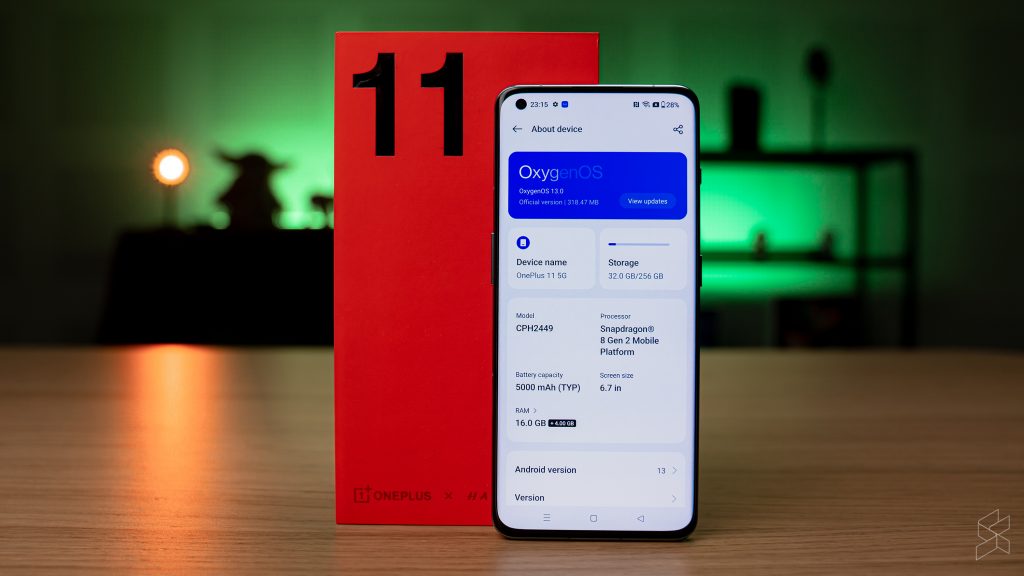
Samsung may have stolen OnePlus’s thunder by announcing a customised version of the Qualcomm Snapdragon 8 Gen 2 chip, but even the vanilla version is no slouch, boasting a claimed 35% performance improvement and up to a 40% reduction in power consumption over the 8 Gen 1 used in the OnePlus 10 Pro.
The 11 also uses the latest LPDDR5X RAM in either 8 and 16GB configurations, along with 128 or 256GB of UFS 4.0 storage. Benchmark tests showed a significant improvement over the 8+ Gen 1 chip in the 10T, but in his review of the phone, Raymond found that it still exhibited stutters and frame rate drops when playing resource-intensive games. It looks like OnePlus still has a ways to go to provide a world-class gaming experience.
The Hasselblad name is back
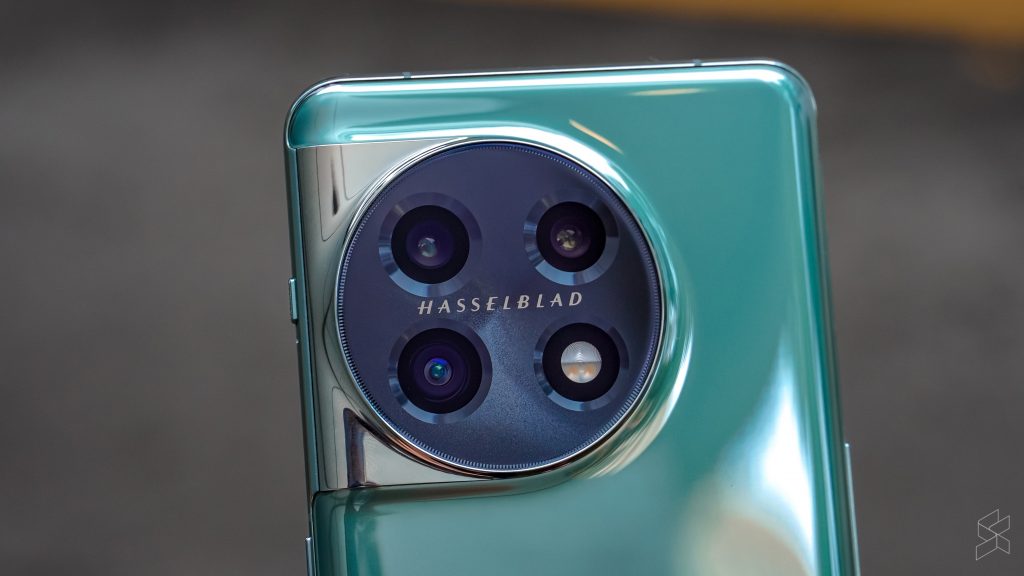
After taking a leave of absence with the 10T, the OnePlus 11 marks the return of the Hasselblad branding, gracing its triple-camera setup. This consists of a 50MP main camera with a Sony IMX890 sensor, optical image stabilisation and an f/1.8 aperture lens, along with a 48MP ultra-wide with a Sony IMX581 sensor sitting behind an f/2.2 aperture lens.
But the biggest change concerns the 2x telephoto shooter, which uses an IMX709 sensor that bumps up the pixel count from a measly 8MP to 32MP, in addition to featuring a larger f/2.0 aperture. New for this year is an “accu-spectrum light colour identifier” that uses a 13-channel spectral sensor—up from the usual seven to eight channels—to deliver more light information for processing. At the front sits a 16MP selfie camera with an f/2.4 aperture.
6.7-inch LTPO 3 display
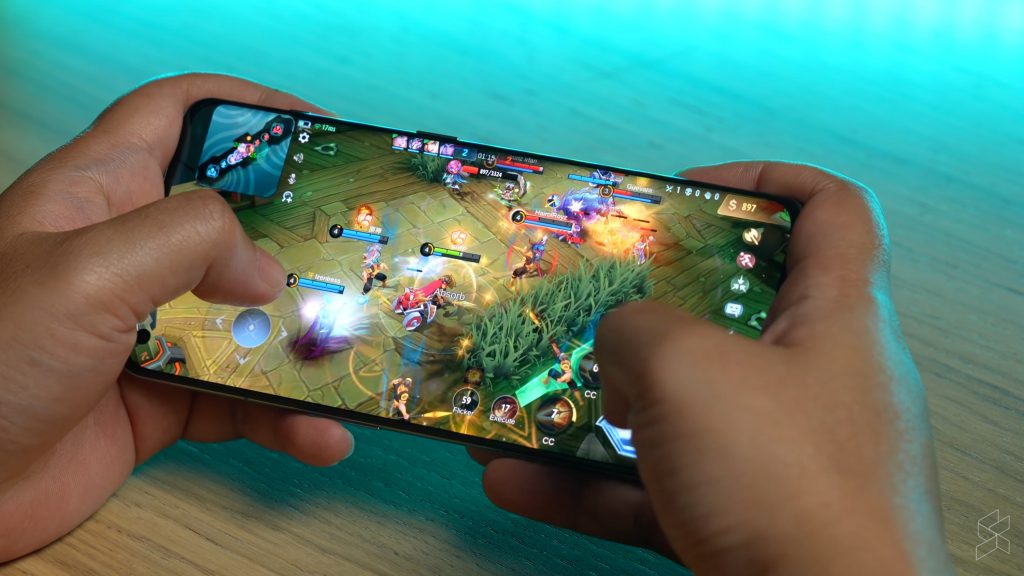
Perhaps the greatest indicator that this is a top-tier phone is the display. The OnePlus 11 comes with a 6.7-inch curved AMOLED touchscreen with a Quad HD+ resolution and an adaptive refresh rate that goes from 1 to 120Hz. The panel is improved over the 10 Pro thanks to the use of LTPO 3 technology, which adjusts the touch sampling rate and accuracy to reduce power consumption. It continues to be covered by Gorilla Glass Victus.
It supports WiFi 7 connectivity
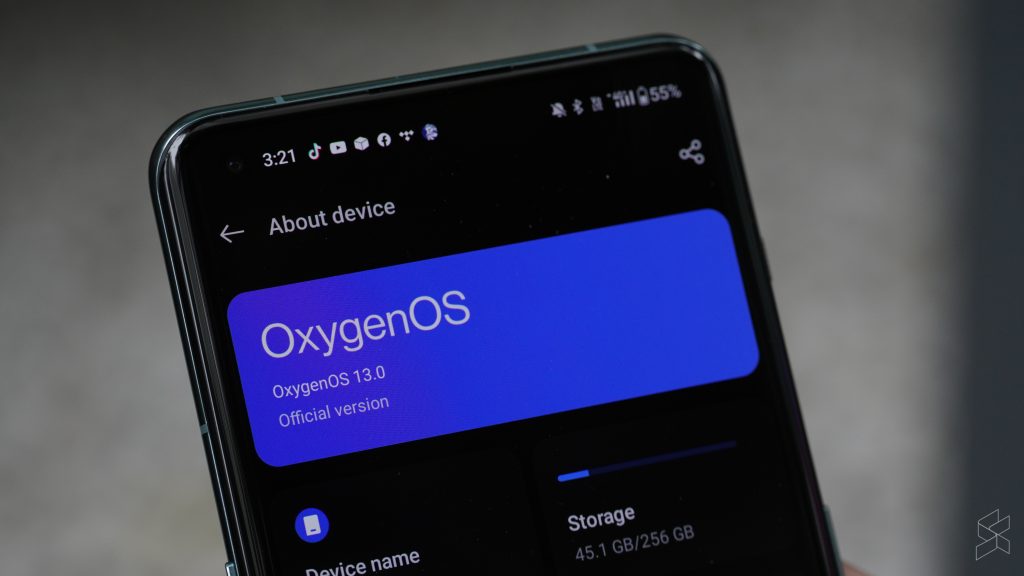
A key feature the global OnePlus 11 has over its Chinese counterpart is WiFi 7 connectivity, which is promised to deliver a faster and more stable connection compared to even WiFi 6E, with double the bandwidth at up to 320MHz—resulting in a theoretical speeds of over 30Gbps.
It should be noted, however, that WiFi 7 routers are practically non-existent at the moment, and even WiFi 6E ones are difficult to find and very expensive. The OnePlus 11’s WiFi 7 capabilities have also been disabled out of the box to conform with worldwide legislation, and will be enabled later on via a software update.
100W SuperVOOC charging but no wireless charging
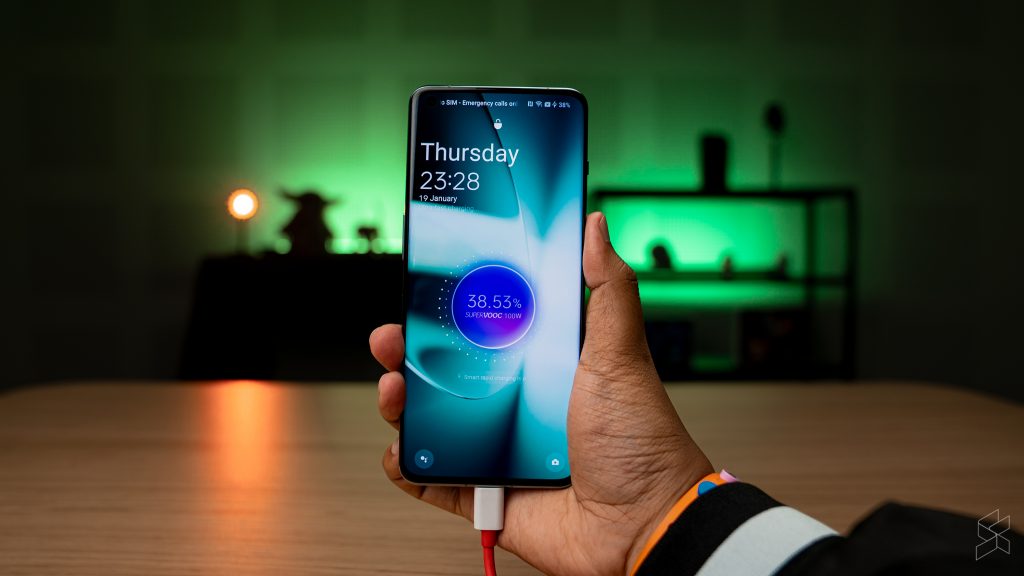
To keep the price down, OnePlus has omitted a couple of things that have become de rigeur in the flagship smartphone space. One of these is wireless charging, although the OnePlus 11 makes up for it by having some of the fastest wired charging speeds in the segment, thanks to 100W SuperVOOC technology. That’s some 50W less than the 10T, but the 11’s 5,000mAh battery is 200mAh larger, so it’s swings and roundabouts. Either way, a full charge takes just 25 minutes.
One more thing—the power brick included in the box has a USB-A port, necessitating the use of a Type-A to Type-C cable. That’s a big downgrade over the OnePlus 10T, which has a USB-C power brick.
It only has an IP64 rating
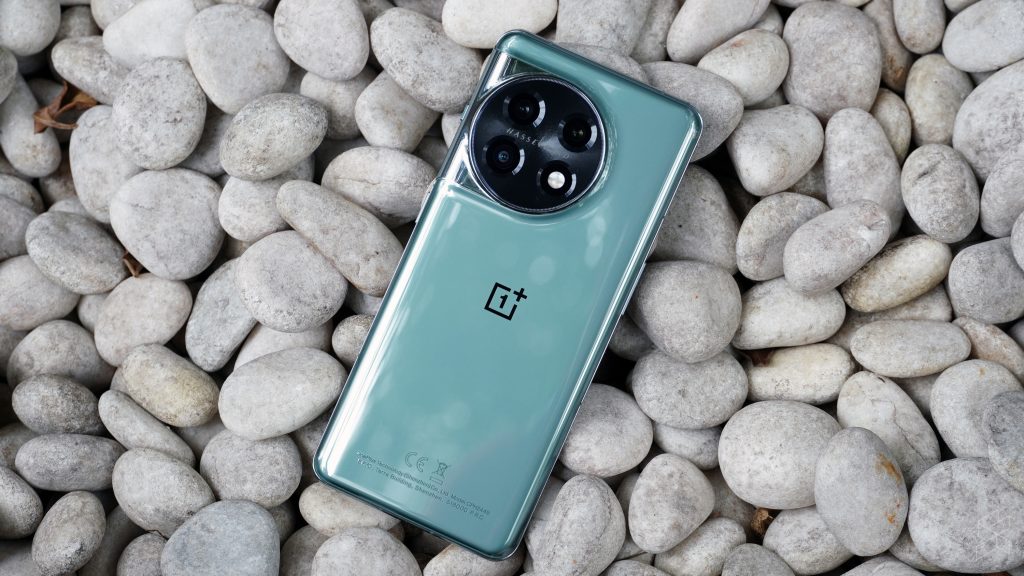
The OnePlus 11 also has a lower IP rating than the competition. Instead, it’s IP64 rated, meaning that it’s dust resistant but is only capable of handling splashes of water, rather than full immersion that is the case with other phones rated at IP68. That shouldn’t make too much of a difference in the real world, but it’s still something you should bear in mind before you get the device dirty and try to rinse it out.
The alert slider also returns
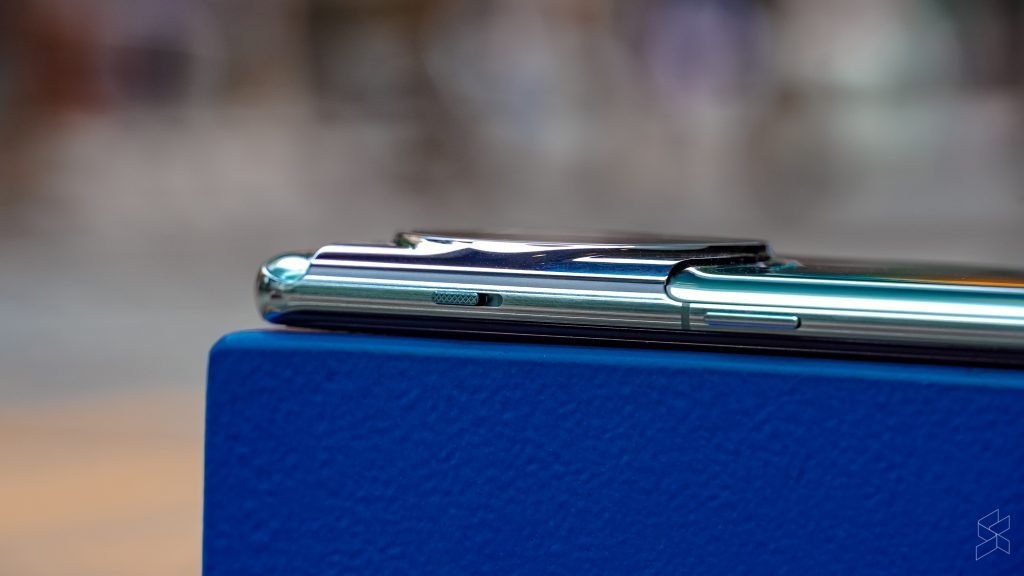
A trademark OnePlus feature, the alert slider went missing on the 10T to considerable controversy, but it’s back on the OnePlus 11. Like the silent switch on the iPhone, the slider can put the device in silent mode without waking the screen, but there’s an extra setting to completely mute all notifications and calls. This will come in extremely handy if you’re in a meeting and need to quickly and discreetly mute your phone.
It should be much cheaper than before
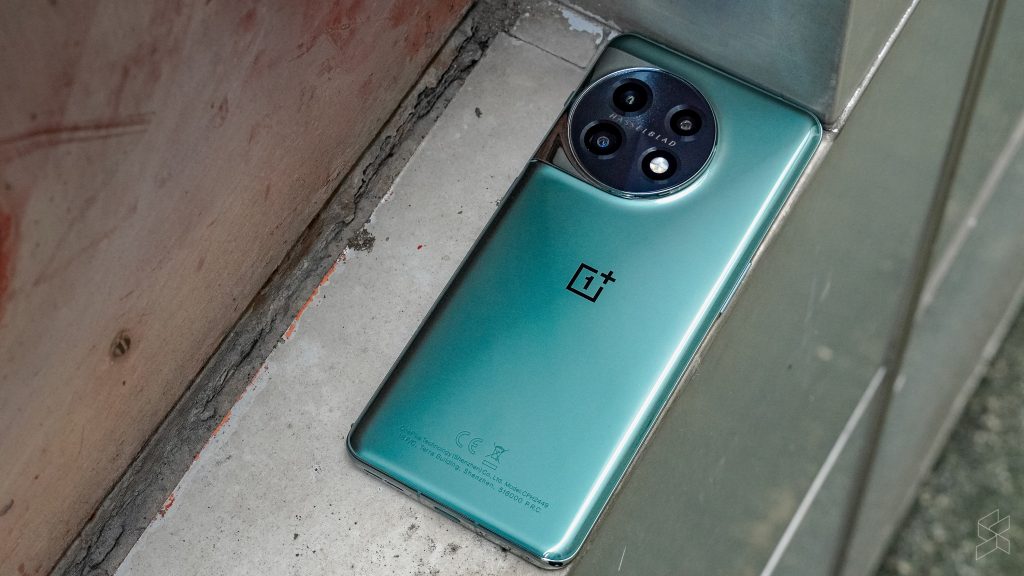
Eyebrows were raised when the OnePlus 10 Pro was launched in Malaysia at a staggering RM4,199 last year. That clearly was a step too far, so OnePlus went the other direction with pricing for the 11. We still don’t have Malaysian pricing, but in the US, the device retails at USD699 (around RM3,010) with 8GB of RAM and 128GB of storage. The version we tested with 16GB of RAM and 256GB of storage costs USD799 (around RM3,440).
As such, we expect the more expensive model to sneak under the RM3,500 mark. It would be great if the OnePlus 11 ended up being cheaper, however, given the omissions. By comparison, the Samsung Galaxy S23 starts at RM3,899 for a smaller screen and a lower base RAM and storage, but with everything the OnePlus lacks and, lest we forget, the strength and after-sales support of the Samsung brand.
The OnePlus 11 will be launched in Malaysia this Valentine’s Day, February 14. As usual, we’ll be on hand to provide you Malaysian pricing and availability as soon as we get it.
Related reading
- The OnePlus 11 will be coming to Malaysia this Valentine’s Day
- There won’t be a OnePlus 11 Pro or a OnePlus 11T this year
- OnePlus 11 Malaysia review: I miss the old OnePlus
- OnePlus 11 launched outside of China: same Snapdragon 8 Gen 2 chip and Hasselblad cameras but with a price hike
- OnePlus 11: This is your first look at OnePlus’s latest flagship in Malaysia, ahead of its Feb 7 launch
- OnePlus 11 passes SIRIM certification, Malaysian launch imminent?
- OnePlus 11: Snapdragon 8 Gen 2, Hasselblad cameras and alert slider but no wireless charging
0 comments :
Post a Comment